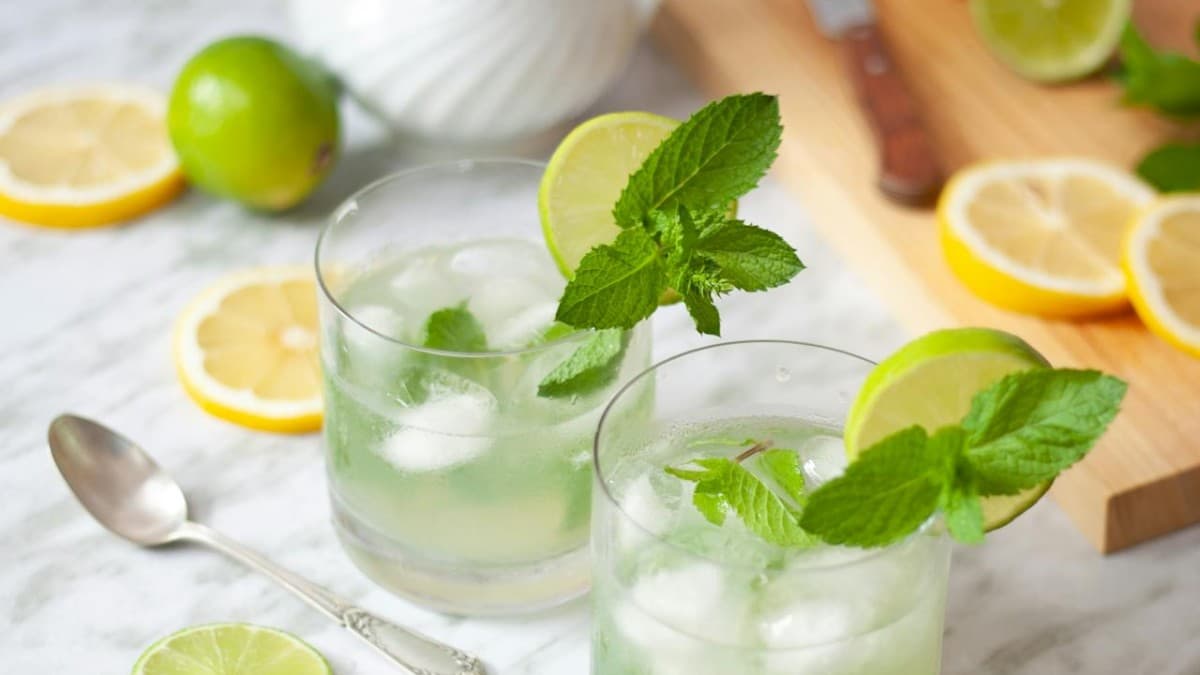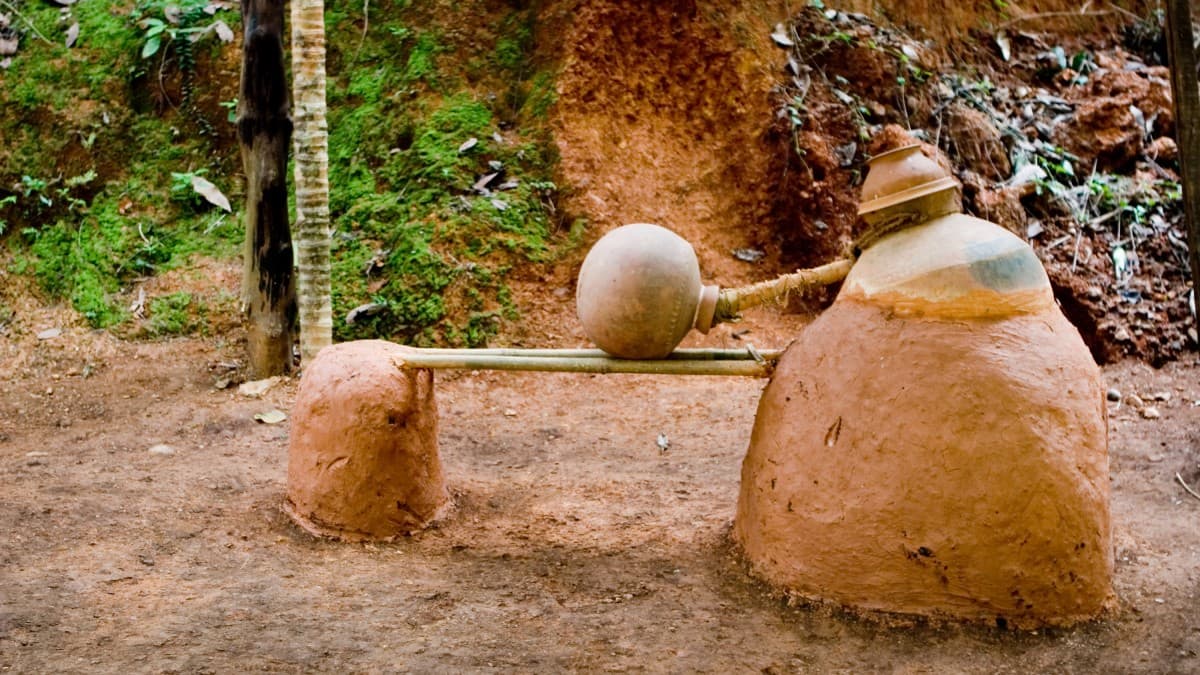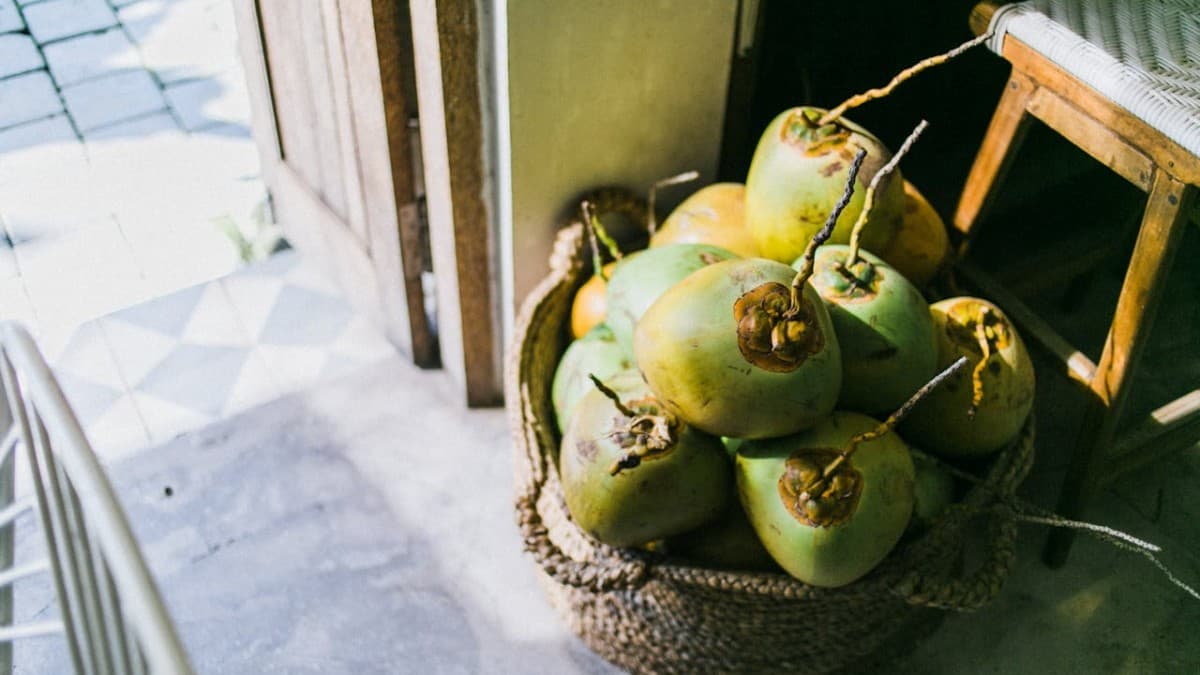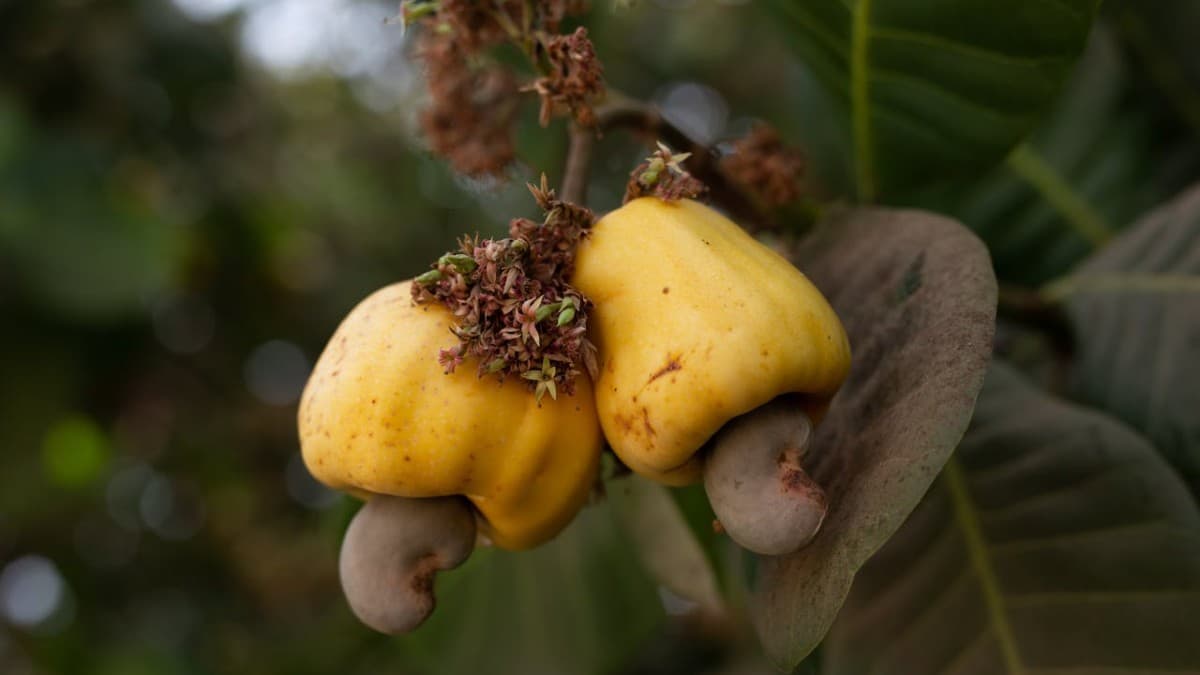What Sets Cashew and Coconut Feni Apart? Goa’s Traditional Spirits Explained
For centuries, feni has played a central role in Goa’s social rituals, celebratory traditions, and beverage culture. But within the world of feni, there exists a vibrant duality: cashew feni, which holds the GI tag and global recognition, and the lesser-known yet older coconut feni. What really sets them apart?
To unpack the nuances between these two traditional Goan spirits, we turned to Aniruddha Mookerjee—feni expert and core team member at The Good Craft Co. (TGCC), a movement dedicated to safeguarding and reviving indigenous knowledge systems, including India’s unique spirits like feni.
The Origins: Coconut Came First
Feni, as we know it today, didn’t begin with cashews. “Coconut or palm feni is the original Goa feni and its recorded origins go back at least 400 years,” explains Mookerjee. Long before the cashew plant arrived from Brazil via Portuguese traders in the late 1600s, locals were already tapping the coconut palm and distilling its sap into an early form of spirit.
This practice wasn’t unique to Goa. Across South and Southeast Asia, fermented palm sap has long been the foundation of spirits like arrack in Sri Lanka and Indonesia. In Goa, it evolved into palm feni, or coconut feni, known for its gentle sweetness and mellow finish.
In contrast, cashew feni (CF) is a relatively recent innovation. “There is no record of caju apple juice being fermented and distilled into feni in South America, where the fruit originated,” says Mookerjee. Its fermentation seems to be a uniquely Indian innovation—further anchoring its cultural identity to Goa.

Geography and Popularity: North vs South Goa
There’s a rough geographical divide when it comes to preference: “Usually, North Goa is associated with caju and South with palm feni,” Mookerjee notes. Coconut feni (PF) remains deeply rooted in traditional South Goan households, often passed down through generations.
But CF has gained widespread fame, thanks to its GI (Geographical Indication) status and more aggressive marketing in the last two decades. Today, it’s more likely to appear in cocktail menus and bar shelves, while PF remains a cult favourite among locals and purists.
Raw Ingredients & Seasonality
One of the most striking differences between the two lies in their source ingredients. Coconut feni is made from the fermented sap (toddy) of the coconut palm—collected fresh by toddy tappers year-round. The sap is highly perishable and ferments quickly, but the coconut palm’s consistent yield makes PF a more perennial product.
Cashew feni, however, is sharply seasonal. The fruiting season spans a narrow window in April and May, and the cashew apple is highly perishable. Traditionally, ripe apples are stomped by foot to extract juice—today replaced by hydraulic presses in larger units. “PF can be produced throughout the year… CF is restricted to a two-month window,” Mookerjee points out.

Sustainability: A Complex Story
Both ingredients present sustainability challenges. Coconut palms, though technically non-native to India, have integrated into local ecosystems and cultural practices over centuries. Cashew, on the other hand, is a high-value cash crop but has displaced large swathes of native forest in Goa and other Indian states.
“Caju is a non-native species… in all the areas it grows, the caju apple is wasted and has no use,” adds Mookerjee. While both crops have environmental footprints, coconut is arguably the more sustainable option due to its multi-purpose value and cultural embedment.
Also Read: 5 Coconut Feni Cocktails That Celebrate Goa’s Local Spirit with a Tropical Twist
From Sap to Spirit: A Shared Process
Surprisingly, the traditional production methods for both types of feni are quite similar:
1. Collection of sap (from coconut) or juice (from cashew apples).
2. Natural fermentation using ambient yeast in terracotta or steel vessels.
3. First distillation, which yields a weaker spirit—called urrak in the case of CF.
4. Second distillation, which results in the finished feni.
Historically, all equipment used was natural—mud pots, bamboo tubes, and hand-cooled condensers. Modernisation brought in copper stills, steel tanks, and coiled condensers immersed in cooling tanks. This evolution has improved quality and consistency, but also distanced the spirit from its artisanal roots.

Flavour Profiles: Bold vs Mellow
“Cashew feni tends to have more pronounced fruity and peppery flavours on the nose as well as palate,” says Mookerjee. It’s robust and complex, appealing to those who enjoy assertive spirits—but possibly overwhelming for novices or those unfamiliar with Indian flavour profiles.
Coconut feni, on the other hand, is “milder, sweeter, less pungent and easier on the nose and palate.” It’s particularly suitable for infusions—ginger, lemon, coffee, or cumin—making it a playground for creative distillers and mixologists.
Terroir: Microclimates Matter
Terroir plays a subtle but important role in flavour. “Terroir differences tend to be more pronounced in PF,” Mookerjee explains. Sap collected during the monsoon is often watery and low in sugar, affecting the spirit’s intensity. Trees located closer to the coast also yield sap with greater salinity, contributing a distinctive mineral edge.
Cashew feni, too, reflects its environment, though less dramatically. Soil quality, altitude, and sunlight exposure subtly influence the sugar content and acidity of the apples, which translates into flavour.

Feni in the Modern Bar
At The Good Craft Co. (TGCC), spirits like feni aren’t just preserved—they’re being reimagined. Bartenders at TGCC events often showcase both cashew and coconut feni in contemporary cocktails that highlight their unique notes.
“PF is more amenable to natural flavour infusions,” Mookerjee notes, making it a great base for herbaceous or spice-forward cocktails. CF’s bold profile, meanwhile, allows it to stand tall even when mixed with strong flavours—think citrus, bitters, or smokey ingredients.
This versatility is being embraced by bartenders not just in Goa, but across India’s premium cocktail bars. The idea is to elevate feni beyond its ‘country liquor’ reputation and present it as a proud, terroir-driven Indian spirit.
Recognition, Revival & The Road Ahead
Despite being the older spirit, coconut feni lacks formal recognition. Only cashew feni holds GI status—and even that comes with caveats. “Only those CF brands that follow the prescribed GI process and have been certified to have been doing so, can use the Cashew Feni GI logo,” Mookerjee clarifies. As of now, just one brand is officially eligible.
Coconut feni, however, is undergoing a quiet revival. Once teetering on the edge of extinction due to the decline of toddy tappers, it has made a comeback thanks to passionate individuals and large coconut plantations in South Goa. “We are seeing the end of an era of PF as a cottage-scale family-owned business,” he notes—but that doesn’t mean it’s vanishing. Instead, it’s transforming.
TGCC plays a vital role in this transition—through research, documentation, and creating awareness. Their goal is to ensure feni—both coconut and cashew—is celebrated not just in Goa, but across India and the world.
“The world needs to see feni the way it sees tequila or sake,” Mookerjee says. “It’s deeply tied to identity, place, and craft. That deserves recognition.”
If you’re new to feni, try both. Let the boldness of cashew feni and the subtlety of coconut feni guide you through Goa’s spirit traditions. Better yet, ask your bartender to craft something inventive with each. As India’s indigenous liquors find their place on the global stage, few spirits embody culture, craft and climate quite like feni.
*Drink Responsibly. This communication is for audiences above the age of 25.




